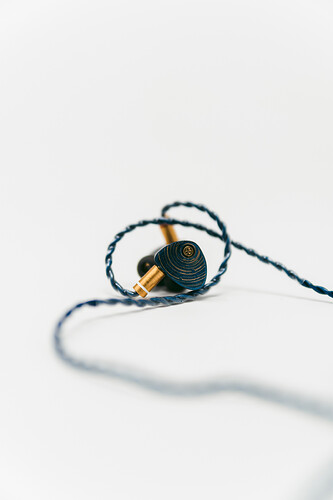Moondrop Starfield II Impressions
INTRODUCTION AND DISCLAIMER:
The Moondrop Starfield II features a 10mm lithium-magnesium composite alloy diaphragm dynamic driver in each housing and retails for $109.99. It is a sequel release to the Moondrop Starfield. I received the Starfield II from ShenzhenAudio in exchange for my review.
NON-SOUND IMPRESSSIONS:
It is clear that the Moondrop Starfield II reuses shells from the the poorly received Moondrop Stellaris. This suggests that the Starfield II may be intended to capitalize on consumer goodwill towards the original Starfield to salvage some of the material costs associated with the Stellaris project.
The Starfield II includes rubber bass plugs that can be inserted into the IEM’s pressure vents. This has the effect of boosting the Starfield II’s sub-bass region substantially. In practice, the bass plugs are poorly designed and implemented. The diminutive size of the bass plugs means that it is not possible to quickly insert and remove them from the pressure vents. Successfully inserting the plugs required many minutes of effort. The plugs appear inconsistently produced, as I had to try several to get one to fit. Once inserted, the plugs can easily fall out and, if inserted too deeply, can block the pressure vents and cause the dynamic driver diaphragm to become misaligned. As a result, sound from the earpiece will be lost until pressure is re-equalized. Finally, I expect the plugs to be easily misplaced. Moondrop includes six of these plugs with the Starfield II, perhaps in anticipation of some of these issues.
MEASUREMENTS:
My measurements of the Moondrop Starfield II can be found on my squig.link database:
Moondrop Starfield II (No Bass Plug) — Squiglink by Bedrock Reviews
SOUND:
Both with and without the bass plugs, the Moondrop Starfield II is a significant departure from the restrained, mature, and inoffensive tunings that Moondrop built its popularity upon.
Without the bass plugs, the Starfield II is a bright, midrange-forward, bass-light IEM that, depending on the track, can often be described as harsh-sounding. Heavy rock genres and electronic dance music are particularly fatiguing to listen to. With the bass plugs inserted, the Starfield II is more tolerable sonically, even if not as subjectively powerful sounding as measurements might indicate.
However, even with the bass plugs inserted, bass notes come across as blunted and lacking texture. Resolution in the bass range is acceptable for the Starfield II’s price.
In both configurations, there is too much ear gain and too much presence, so much so that even male vocals can sound sibilant. Male vocals sound thin and strained, and female vocals sound sharp. On the other hand, midrange clarity and instrument separation are excellent, and the timbre is surprisingly realistic given the issues listed above.
The Starfield II has too much lower and mid-treble, which further exacerbates ear fatigue. There is an excess of sparkle, and treble transients sound oversharpened. Considering the cost, detail retrieval is average. Imaging and soundstage are better than expected.
CLOSING WORDS:
The Moondrop Starfield II fails to meet expectations associated with its predecessor — one of the most popular budget IEMs of the last five years. There are expectations associated with the Starfield name. A Starfield sequel should have been easy to recommend to a broad swath of listeners even if it were not the most exciting-sounding IEM on the market. The Starfield II falls well short of that bar. I do not recommend it, and urge Moondrop to treat this lineage of products with greater care and respect for consumer expectations.
